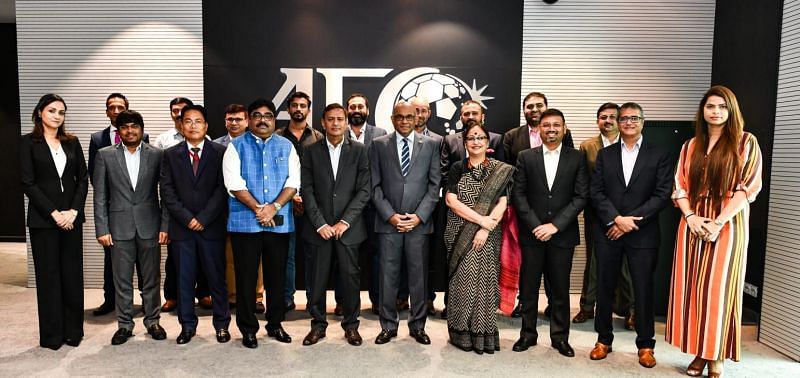
Indian football's 'new' league system still has to overcome many challenges
India will no longer be the only country in the world that operates two top-tier football leagues. In a meeting held at the Asian Football Confederation headquarters, Kuala Lumpur, on 14 October, 2019, a plan to reform club football was proposed, and agreed upon.
The meeting had representatives from AFC, AIFF, FSDL (Football Sports Development Limited, which manages the Indian Super League), ISL teams and I-League clubs. The headline was that ISL would now be awarded top-tier status. And hence, the AIFF's national football league, the I-League, will be the second tier. And a five-year process was proposed to 'merge' the two leagues.
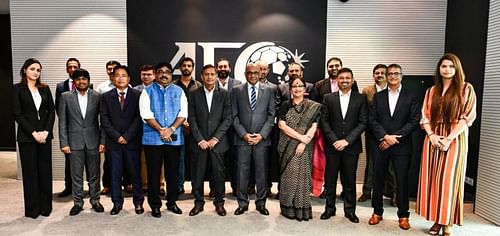
The proposed roadmap
The 2019-20 ISL champions will now be granted a place in the AFC Champions League playoffs, while the I-League champions will go to the playoffs of the AFC Cup--a "special compensation". It was the other way round last season.
By the end of 2020-21 season, two I-league clubs can join the ISL--subject to the teams meeting the required criteria. And from the 2022-23 season onwards, the winner of the I-League will stand a chance to be promoted to the ISL, with no participation fee. But the promoted club should also fulfill the AIFF's "merit and national club licensing criteria".
Finally, the promotion-relegation system between the ISL and I-League will be fully implemented starting the 2023-24 season. There will be no relegation until this season.
The vulnerable I-League
Though the proposal looks remarkable, experts have raised several issues. According to a column in The Economic Times, only one representative from the AIFF attended the meeting, while the FSDL had three.
"To say that most things went the ISL way won’t be an exaggeration. It is given the status of country’s top league and a berth in Asian Champions League, both previously held by the I-League," writes Jaydeep Basu for ET.
The only silver lining is that the promoted I-League clubs will not have to pay a franchise fee to join the ISL. But this also means these teams will not be entitled to a share of the ISL's central revenue, a concern considering the costs involved. For example, Bengaluru FC's operating expenses doubled when the club shifted from I-League to the ISL. In the long run, this decision could affect the survival of I-league clubs in the ISL.
But that is if they survive till the 2022-23 season. AIFF was unable to finalise a broadcaster for the current season until mid-November. The season would start two weeks later. And while DSport agreed to broadcast the I-League, there were telecast problems on the inaugural matchday. From blackouts to use of mobile cameras, it's been a poor viewing experience for I-League fans so far.
Jaydeep Basu's column also suggests that the two clubs who could move to the ISL by the end of the 2020-21 season are Mohun Bagan and East Bengal. Their success, legacy, and fan base would make them good candidates, if they can meet the criteria for an ISL club.
But if the two biggest clubs left in the I-League leave, what will happen to the competition? They might lose out on the already dwindling sponsorships as well. The likes of Real Kashmir, Minerva Punjab, Gokulam Kerala, Neroca, Aizwal FC, Shillong Lajong, Chennai City FC, and the Goan clubs will be left to fend for themselves.
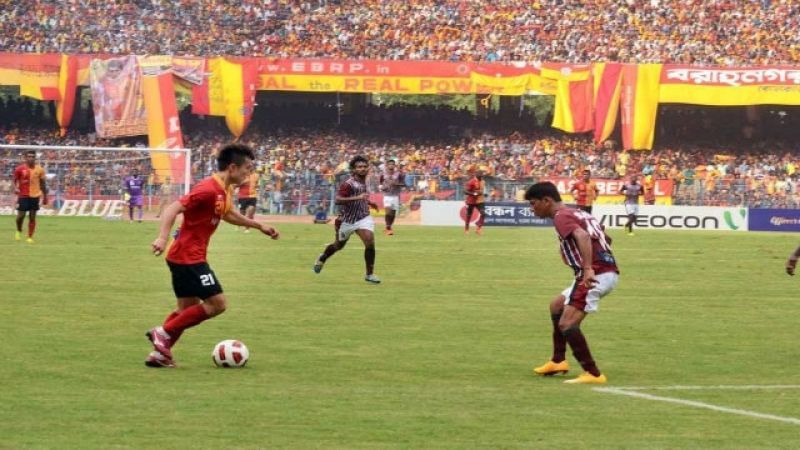
ISL's unsustainable business model
This does not mean the ISL is invulnerable. Despite the ISL being the fourth most-watched league in the world--after the Premier League, La Liga, and Bundesliga--there's more to it. Before ISL was officially declared as the top tier in Indian football, a 2018 KPMG Football Benchmark report said that a key issue would have to be addressed: an economic business model. The report called it "a unique case in point in modern football".
"ISL franchises simply do not generate any broadcasting revenue. As a co-owner of the league, Star India owns all broadcasting rights of the competition and the ISL is thus unable to sell its TV rights to any other media company. As a result, ISL franchises do not benefit from any TV-related money, unlike the vast majority of the professional leagues worldwide. This is undoubtedly one of the biggest hurdles on their road to sustainability," states the KPMG report.
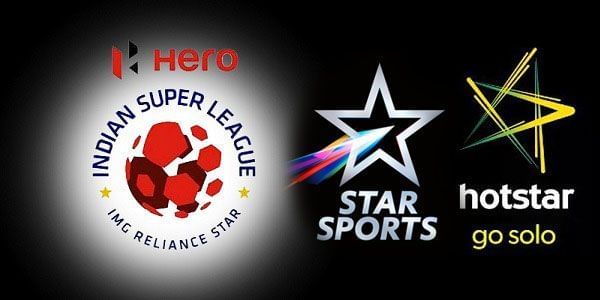
The Premier League has already explained the importance of broadcast revenue in club football. Premier League Clubs receive 46% to 88% of their total income from TV and broadcast rights, the single largest source of income for most clubs. It's especially important for the smaller clubs with lower commercial, merchandising and match-day incomes.
In the 2017-18 season, the Premier League club with the lowest turnover, Huddersfield, generated a total revenue of £125 million, of which £110 million came from TV and broadcast rights. This money played a role in the Terriers' overall annual profit of £30 million.
With no TV and broadcast rights, ISL clubs earn from their share of the central sponsorship revenue, individual sponsorships, match-day ticketing, merchandise and player transfers. ISL's partnership with Hero is the most noteworthy for the central sponsorship revenue. The two-wheeler automobile giant signed a deal worth $ 8 million for three years in 2014, which significantly increased to $25 million for three seasons starting in 2017.
But ISL's estimates on how much--initially 20%--of the central sponsorship revenue would be utilised for organization was off the mark from the beginning. This meant a lower pool to be distributed among the teams.
According to an HT report from 2015: "... Nothing from the central sponsorship pool, said to be worth around Rs 70 crore, came to the franchises. The league is supposed to take 20% as operational expense but the rest wasn’t ploughed back to the teams as promised. A spokesperson for the ISL said that happened because a huge amount was spent in getting the venues ready."
More recent numbers aren't too encouraging either. According to Mint's analysis, in 2017-18, only one franchise reported a pre-tax profit: the JSW-owned Bengaluru FC. Nine of ten ISL franchisees registered losses. Kolkata's ATK reported a net loss of Rs 53.5 crore. According to NorthEast United's annual report, the club paid more as participation fee to the ISL than the amount they received from the central pool.
The spending by football fans in India is also a barrier to matchday and merchandising revenues. Despite season ticket prices as low as Rs 1400, Mumbai City FC could only attract 4,742 people to watch their match on an average at their Mumbai Football Arena with a stadium capacity of 18,000. And for Indian clubs, the player transfer market is new and not profitable territory as of now.
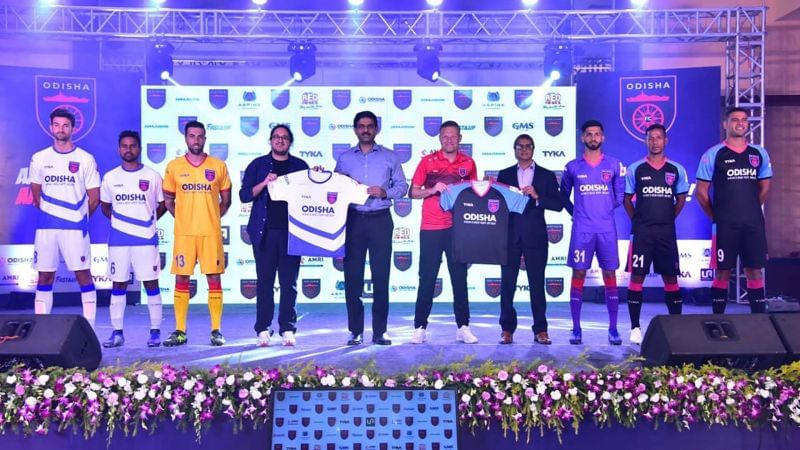
As the figures suggest, owning a team in the top tier of football in India is a privilege limited to investors with deep pockets. But even then, operating costs have had an impact. Delhi Dynamos FC moved its base more than 1,000 km to Bhubaneswar and changed its name to Odisha FC to reportedly benefit from thelower operating costs.
The merger of two leagues can be regarded as a positive development overall, considering the future of Indian football. Several international football groups and investors have started to see potential profitability in Indian football. The City Football Group's recent acquisition of the majority stake in Mumbai City FC is an example. But, challenges exist as sustainability for all--clubs and leagues--remains a problem that needs to be solved.